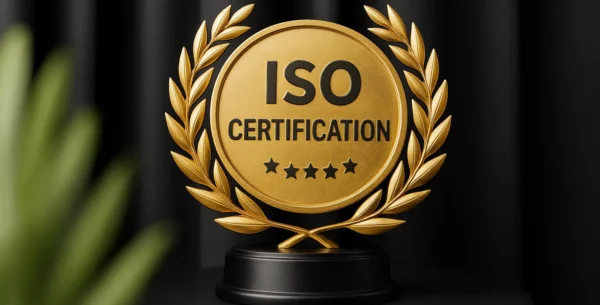How To Build An IT Support Budget That Future-Proofs Your Business

[Updated December 2024]
Budgeting for IT Support can feel daunting for small and midsize businesses. The challenge lies in balancing the costs of essential tools and services with the need for innovation and security. With so many factors at play, from industry demands and data management needs to the size of your team, it can be tricky to determine the right investment. Yet, a well-structured IT budget is essential for staying competitive and driving success.
This guide aims to help you shape an IT budget that aligns with your business goals while maximising value and efficiency. We’ll delve into why IT is more than just an expense and explore the key areas that deserve your focus.
Table of Contents
IT Support Budget: An Investment, Not Just a Cost
Effective IT isn’t just about having tools to communicate or stay secure. It’s a strategic investment that can drive productivity, protect your reputation, and help your business grow.
What the right IT investment can achieve:
- Streamlined Operations: Automate repetitive tasks, boost efficiency, and stay agile in the face of market challenges. For example, workflow automation tools can save countless hours of manual effort, allowing staff to focus on value-adding activities.
- Flexibility with Cloud Solutions: Support remote working and mobile teams, increasing productivity and collaboration. The rise of hybrid work models means that cloud solutions are no longer optional but essential for ensuring continuity and efficiency.
- Enhanced Security: Protect critical data and maintain trust with customers by reducing the risk of cyber threats. Comprehensive IT security measures not only safeguard sensitive information but also fortify your brand’s credibility.
Small and midsize businesses without an internal IT team should generally budget around £90 to £100 per employee each month. This investment provides access to expert support and modern technologies, helping your business run more efficiently and reliably.
Key Areas to Focus Your IT Budget
Allocating your IT budget effectively is crucial. Here are the primary areas to prioritise:
1. Upgrading Software
Outdated software may seem cost-effective, but it can limit productivity and expose your business to security risks. Modern, collaborative tools can enable your team to work smarter and more efficiently. Periodically review your software to ensure it meets your needs. For example, switching to cloud-based platforms like Microsoft 365 can unlock enhanced features and scalability, improving both user experience and performance.
2. Refreshing Hardware
Old hardware and operating systems can pose security risks and hinder performance. For example, continued use of unsupported systems, such as Windows 10 after its support ends in October 2025, will leave businesses vulnerable to cyber threats. Upgrading hardware can enhance performance and ensure compatibility with modern tools. Investing in reliable laptops, ensures employees have the tools they need to perform at their best.
3. Leveraging Cloud Services
Cloud computing has revolutionised how businesses operate. It enables seamless collaboration and provides secure, remote access to critical information for employees on the go. If you have remote or hybrid teams, investing in cloud solutions is a must. Beyond collaboration, cloud services can also offer cost savings through reduced hardware reliance and scalable pricing models tailored to your business’s needs.
4. Partnering with IT Specialists
For many small and midsize businesses, having a full-time IT team isn’t realistic. That’s where working with IT specialists can make all the difference. You get expert advice and support that’s shaped around what you actually need. Whether it’s improving cyber security or streamlining your systems, they’ll help keep your technology safe, compliant, and running smoothly. Plus, it frees up your team to focus on what they do best.
Tips to Optimise Your IT Budget
Businesses often need to be strategic to balance quality and cost. Here are some tips to help you get the most from your IT budget:
Conduct Regular IT Audits
Identify outdated systems and uncover opportunities for cost savings or performance improvements. Regular reviews also help you assess how well your current IT infrastructure aligns with your evolving business goals.
Embrace New Technology
Evaluate innovations that could reduce long-term costs or drive productivity. For instance, automation tools and AI-powered platforms can deliver immediate returns by simplifying complex processes.
Plan for Scalability
As your business grows, your IT needs will evolve. Invest in solutions that can scale alongside your operations to avoid costly overhauls down the line.
Think Long-Term
View IT as a vital investment in your business’s future success. A forward-thinking approach can save you from unexpected costs and disruptions, enabling steady progress toward your goals.
Why Partner with CYAN?
At CYAN, we specialise in supporting businesses across multiple sectors to make the most of their IT budgets. Our tailored approach ensures your investment delivers tangible results, from improving operational efficiency to enhancing security and flexibility. We understand that every business is unique, which is why we offer customised solutions designed to align with your objectives.
Ready to transform your IT strategy? Contact our team today to discover how we can help you build a resilient, future-proof IT infrastructure. Together, we’ll ensure that your IT budget works harder for you and supports your journey toward long-term success.
Ready to transform your IT Strategy?
Discover how we can help you build a resilient, future-proof IT infrastructure.
Learn how we can help
